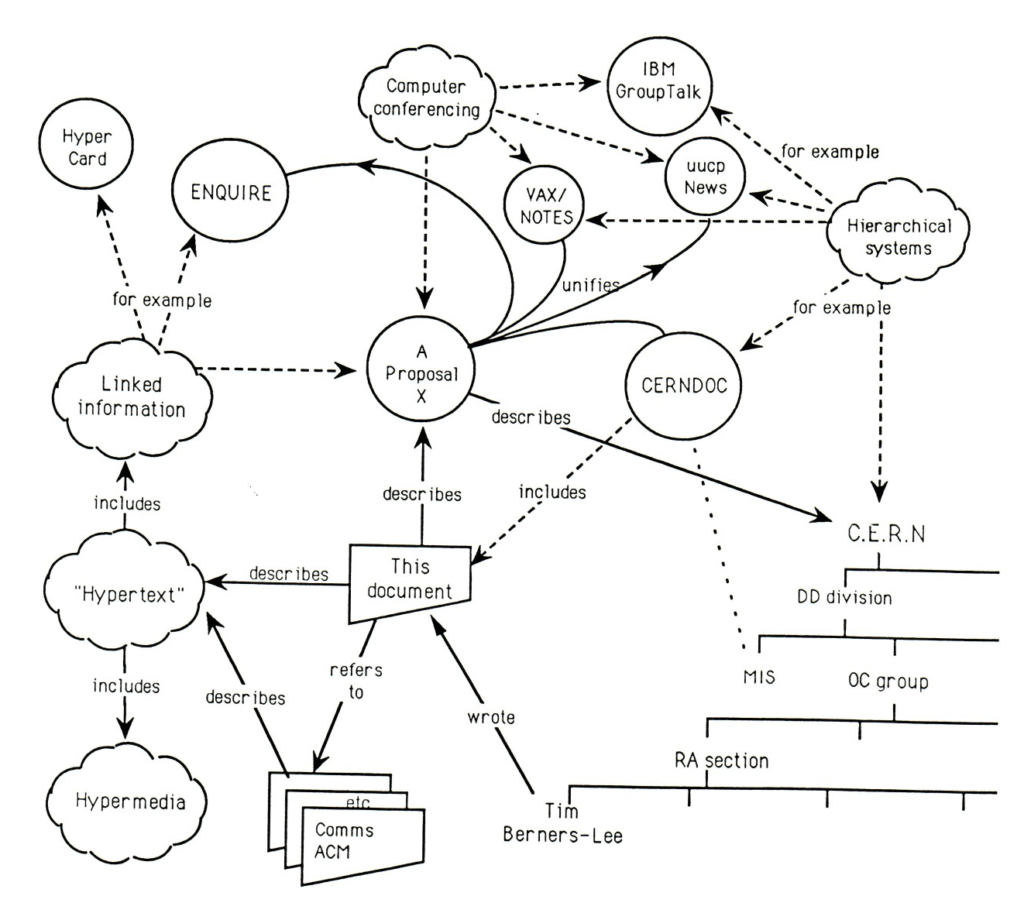WWW Day – August 1, 2022
July 29, 2022
A History
When Mike Sendall read Berner-Lee’s memo he noted on it, “Vague but exciting.” The memo was titled, “Information Management: A Proposal.” Sir Tim (as he would eventually be known) wrote the memo to propose a system that would help his co-workers at CERN (a nuclear physics lab) share information. He was 33.
Tim Berners-Lee described his idea as, “a large hypertext database with typed links.” He called the system “Mesh.” Following Sendall’s approval, he developed his initial flowchart into a working model. From that plan he wrote the first version of HTML. And the HTTP application. Plus, a browser and page editor. By 1991 the web was running on servers and in use at CERN.

The diagram from the first page of Tim Berners-Lee’s proposal for the World Wide Web in March, 1989.
Not the Internet
Berner-Lee’s “web” wasn’t the internet. That had been around for over 30 years. What his creation added was HTML, the idea of URL addresses and the hypertext transfer protocol (HTTP). His design also made the whole thing decentralized, which may have been the key idea in the proliferation of the system.
As with most great developments in their early stages (the wheel, penicillin, and umbrellas for example), the web had some fun facts associated with it:
- The first server was a NeXT computer.
- The first popular web browser was Mosaic.
- In 1993 there were 50 web servers in January and 500 in October.
- Yahoo!’s Filo and Yang essentially created search in 1994.
- Google was initially named “BackRub” in recognition of its reliance on backlinks.
- The first live video online was from the University of Cambridge broadcasting a working coffee pot.
- Symbolics.com was the first registered domain.
- Spam pre-dates the web and was first sent over the internet in 1978.
Lift a glass – perhaps a CIDR glass – to World Wide Web Day.
